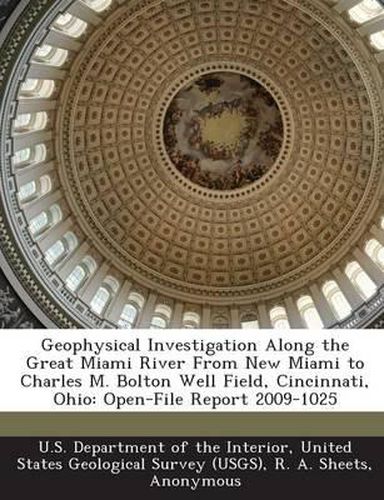Readings Newsletter
Become a Readings Member to make your shopping experience even easier.
Sign in or sign up for free!
You’re not far away from qualifying for FREE standard shipping within Australia
You’ve qualified for FREE standard shipping within Australia
The cart is loading…






Three geophysical profiling methods were tested to help characterize subsurface materials at selected transects along the Great Miami River, in southwestern Ohio. The profiling methods used were continuous seismic profiling (CSP), continuous resistivity profiling (CRP), and continuous electromagnetic profiling (CEP). Data were collected with global positioning systems to spatially locate the data along the river. The depth and flow conditions of the Great Miami River limited the amount and quality of data that could be collected with the CSP and CRP methods. Data from the CSP were generally poor because shallow reflections (less than 5 meters) were mostly obscured by strong multiple reflections and deep reflections (greater than 5 meters) were sparse. However, modeling of CRP data indicated broad changes in subbottom geology, primarily below about 3 to 5 meters. Details for shallow electrical conductivity (resistivity) (less than 3 meters) were limited because of the 5-meter electrode spacing used for the surveys. For future studies of this type, a cable with 3-meter electrode spacing (or perhaps even 1-meter spacing) might best be used in similar environments to determine shallow electrical properties of the stream-bottom materials. CEP data were collected along the entire reach of the Great Miami River. The CRP and CEP data did not correlate well, but the CRP electrode spacing probably limited the correlation. Middle-frequency (3,510 hertz) and high-frequency (15,030 hertz) CEP data were correlated to water depth. Low-frequency (750 hertz) CEP data indicate shallow (less than 5-meter) changes in electrical conductivity. Given the variability in depth and flow conditions on a river such as the Great Miami, the CEP method worked better than either the CSP or CRP methods.
$9.00 standard shipping within Australia
FREE standard shipping within Australia for orders over $100.00
Express & International shipping calculated at checkout
Three geophysical profiling methods were tested to help characterize subsurface materials at selected transects along the Great Miami River, in southwestern Ohio. The profiling methods used were continuous seismic profiling (CSP), continuous resistivity profiling (CRP), and continuous electromagnetic profiling (CEP). Data were collected with global positioning systems to spatially locate the data along the river. The depth and flow conditions of the Great Miami River limited the amount and quality of data that could be collected with the CSP and CRP methods. Data from the CSP were generally poor because shallow reflections (less than 5 meters) were mostly obscured by strong multiple reflections and deep reflections (greater than 5 meters) were sparse. However, modeling of CRP data indicated broad changes in subbottom geology, primarily below about 3 to 5 meters. Details for shallow electrical conductivity (resistivity) (less than 3 meters) were limited because of the 5-meter electrode spacing used for the surveys. For future studies of this type, a cable with 3-meter electrode spacing (or perhaps even 1-meter spacing) might best be used in similar environments to determine shallow electrical properties of the stream-bottom materials. CEP data were collected along the entire reach of the Great Miami River. The CRP and CEP data did not correlate well, but the CRP electrode spacing probably limited the correlation. Middle-frequency (3,510 hertz) and high-frequency (15,030 hertz) CEP data were correlated to water depth. Low-frequency (750 hertz) CEP data indicate shallow (less than 5-meter) changes in electrical conductivity. Given the variability in depth and flow conditions on a river such as the Great Miami, the CEP method worked better than either the CSP or CRP methods.